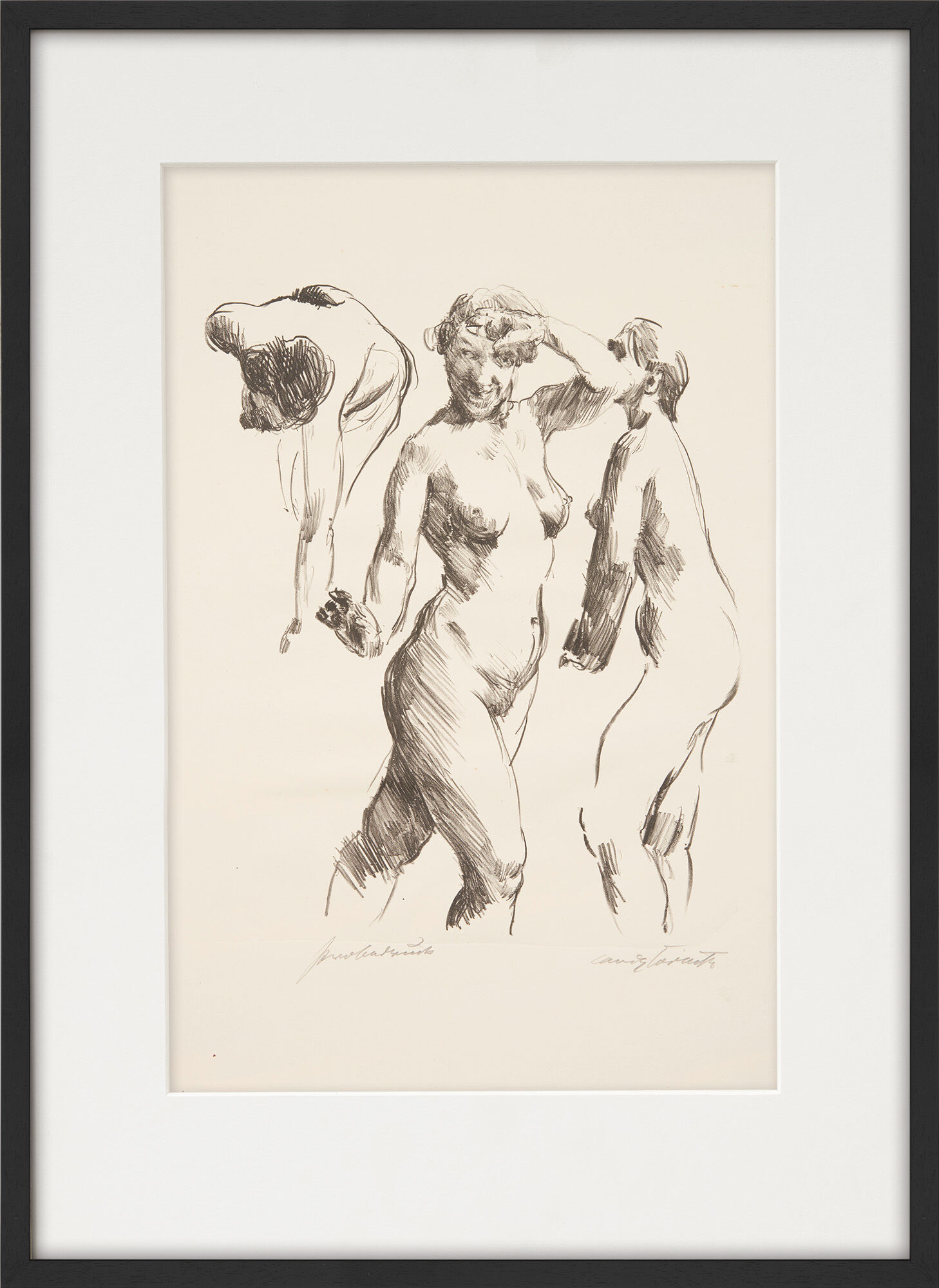Picture "Movement Studies" (1913)


Picture "Movement Studies" (1913)
Quick info
limited, 5 copies | signed | titled | lithograph | framed | size 53.5 x 47 cm
Detailed description
Picture "Movement Studies" (1913)
Original lithograph, 1913. Edition: maximum 5 copies, rare proof. Probably only this copy is the only one known. Signed and titled. On the back with inventory number of the Gurlitt collection "C III 106". Catalogue raisonné Schwarz L 137. Subject size 31 x 26 cm. Sheet size 48 x 32 cm. Size in frame 53.5 x 47 cm as shown.
About Lovis Corinth
"True art has no practical, utilitarian aftertaste. It exists solely for itself. Egotistical like a god, it stands before us in all its radiance." (Lovis Corinth)
The work of Lovis Corinth (1858-1925) is difficult to define as a whole. It is even questionable to classify his work as "German Impressionism" as opposed to French Impressionism - Corinth certainly experimented with the effect of colour in the sense of giving autonomy to the pictorial means. But he was mostly alien to scientific-academic calculations, colour systems or a justification of the effect of colour based on physics. In general, he opposed the artistic trends of his time and even scorned many of the new approaches of the young avant-garde as "formula art".
But at first glance, Corinth only appears to be a "conservative" painter. On the one hand, he remained attached to the figurative, realistic style of painting throughout his life. His sources of inspiration remained the old Dutch, above all Rembrandt, and he died near Amsterdam because he wanted to admire the originals there once more. However, on the other hand, he was regarded as a rebel and innovator, and always took the classical genres (history paintings, biblical and mythological themes) with a highly subjective eye, even to the point of parody and travesty. Thus, in the end, he was completely and utterly an outstanding contemporary of his artistic epoch and was perceived as such. He was modern in every respect anyway, and the series of his famous self-portraits show the sometimes-unstable Corinth, torn between artistic intoxication and depression, as a master of psychological self-interpretation.
Corinth's late work is of particular importance. First of all, there are the Walchensee pictures, which were painted near Urfeld in the south of Munich from 1919 onwards and in which the painter rediscovered landscape painting for himself. But he also sought and found new approaches in other subjects, such as portraits and still lifes.
The field of graphic arts, that includes artistic representations, which are reproduced by various printing techniques.
Printmaking techniques include woodcuts, copperplate engraving, etching, lithography, serigraphy.


